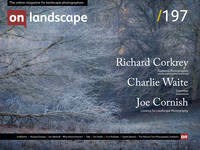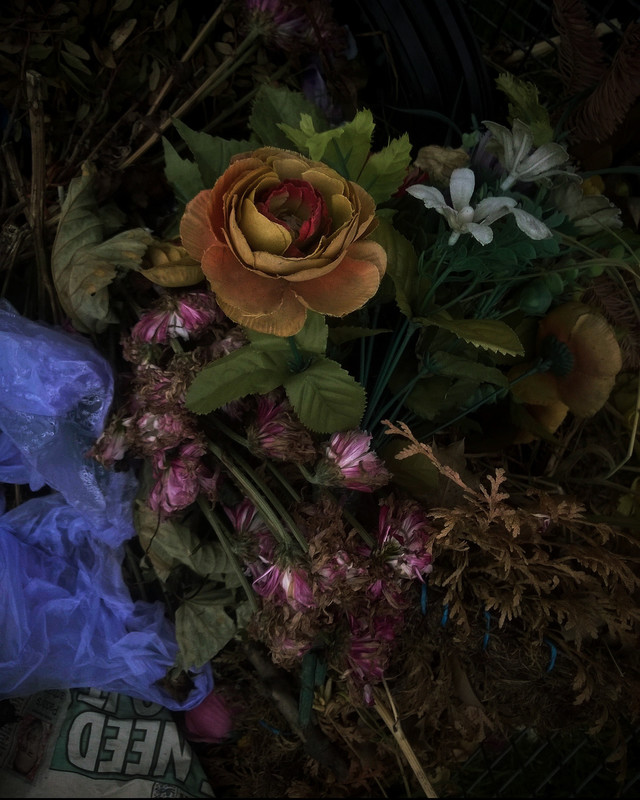Richard Earney chooses one of his favourite images

Richard Earney
Richard is a designer and abstract landscape photographer living in North London. He uses a variety of cameras and a scanner to create his imagery. He’s happiest outdoors enjoying the landscape, but also when striving to find the abstract and unusual that’s out there.
Each morning during term time, the photographer Al Brydon takes his son to nursery school. At first, it is up the road, past the local Social Club, then after a while, they turn in at an opening which is the entry to the cemetery. It is a large open area with wide, orderly, avenues. Splendid views over the Peak District National Park and, naturally, plenty of graves and memorials. You might even think, “A lovely spot to be buried!”
Some of these graves will be adorned with bunches of flowers or single flowers in a vase. These simple offerings are our connections between the living and the mourned dead.
Regular mourners tend to the graves, sweeping dirt and debris from the memorials, cleaning lichen from the gravestones. These important rituals help them maintain connections with their departed loved ones. Some graves are never visited, so they get weathered and less and less visible over time.
As Al and his son wander through, they go past various metal bins, where all sorts of rubbish are deposited.
The flowers he saw over the next few months lying in these bins were often roses - ‘a rose for remembrance’. Another favourite was chrysanthemums, which in many countries symbolise death and are only used for funerals and on graves. In the Far East, they are flowers which symbolise lamentation or grief.
Normally these bunches are wrapped in plastic with traces of condensation on the inside, tied with a silk ribbon; remnants of handwritten notes, sometimes wrapped in newspapers; old headlines reminding us of past celebrity misdeeds, great sporting triumphs, or politicians leading the country to uncharted places.
Al began to capture these on his phone. It is quite an old, battered phone by now, but it keeps capturing gorgeous colours.
These ‘Cemetery Bins - The Graveyard’s Graveyard’ with their faded flowers began to show up on Al’s Instagram and Twitter timelines. I could see immediately that they were magical. Not conventional landscapes, but documentary landscapes of the mind. Seeing them made me make all the connections about what they represented, how each bunch tells a story, how they are part of time, yet frozen in time.
They also reminded me of Dutch Old Master still life paintings, such as Rachel Ruysch’s Basket of Flowers. A lot of Al’s work has a darkness about it, so it is no surprise that this does,. It is after all, a bleak subject. The colours shine from a dark background in these photographs. It is rare to find blue roses, but these seem to be popular for laying on graves and there are certainly a good selection in this series.
I’m hopeful that these images will be exhibited at some point as I think they will make a glorious translation from the tiny views we have in social media apps, to proper photographic prints. Meanwhile, I hear talk of a book of these, which will be a wonderful thing too.
To me, it shows that working in a series, treading the same paths for an extended period can make for a great body of work. By walking through this cemetery day after day, most of what is static retreats from your field of view. Only then can you see the small details, the changes, the something that makes a place different. In these images, Al has picked on something most would pass by, and we can revel in what he sees.


